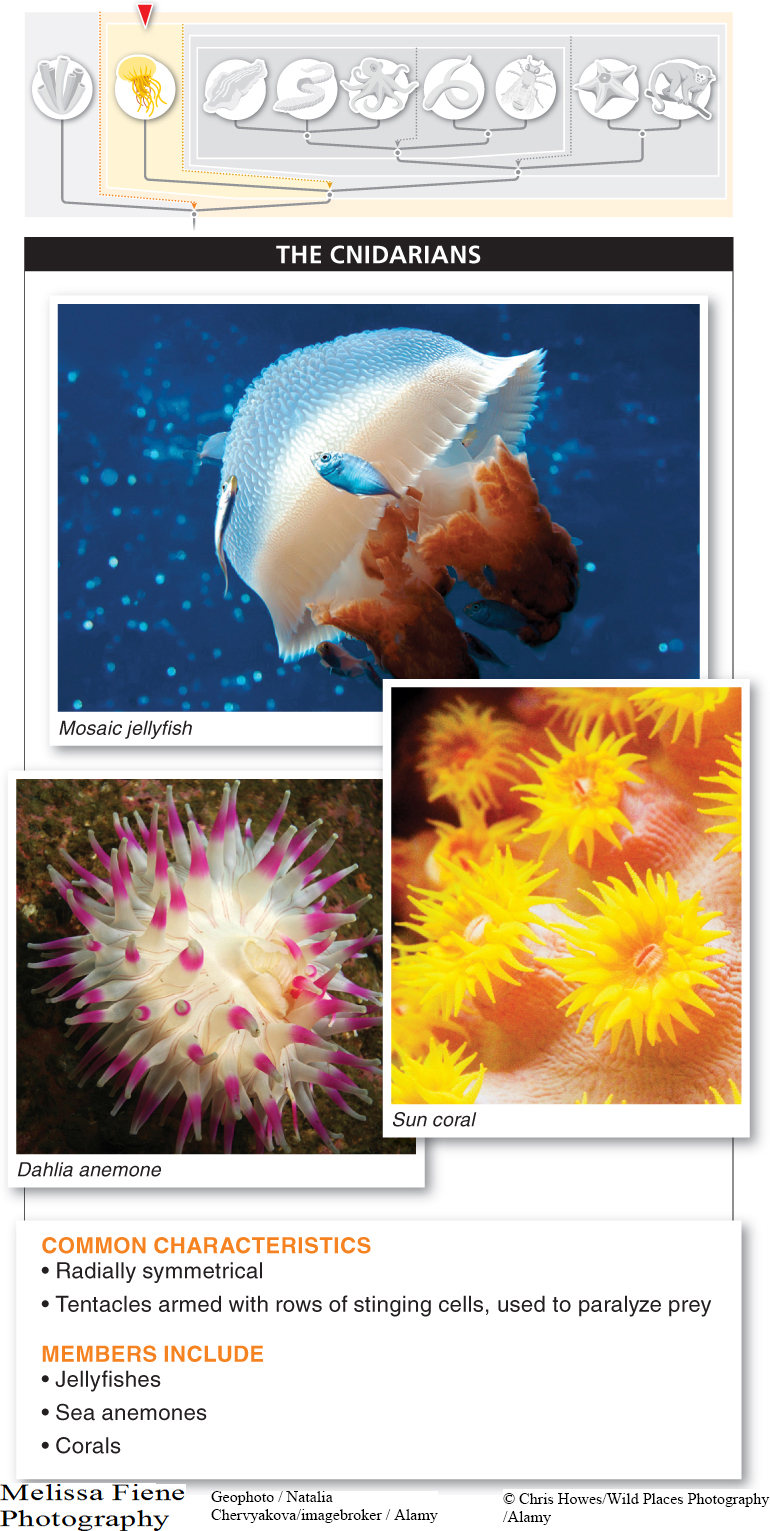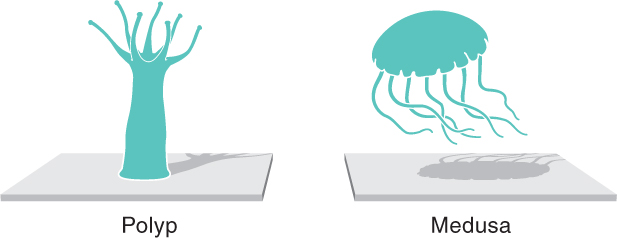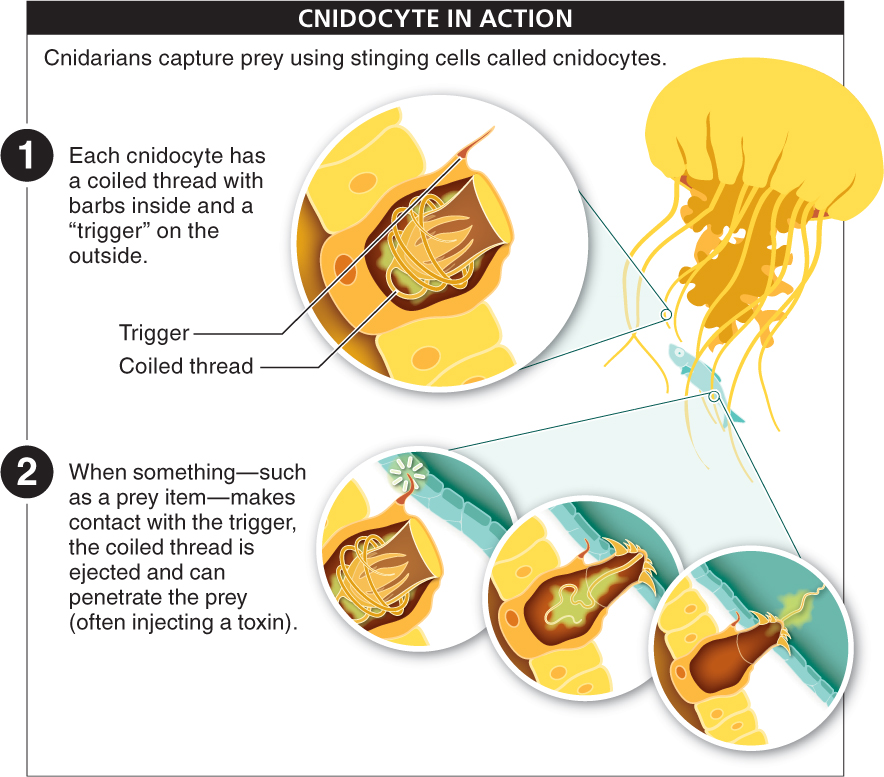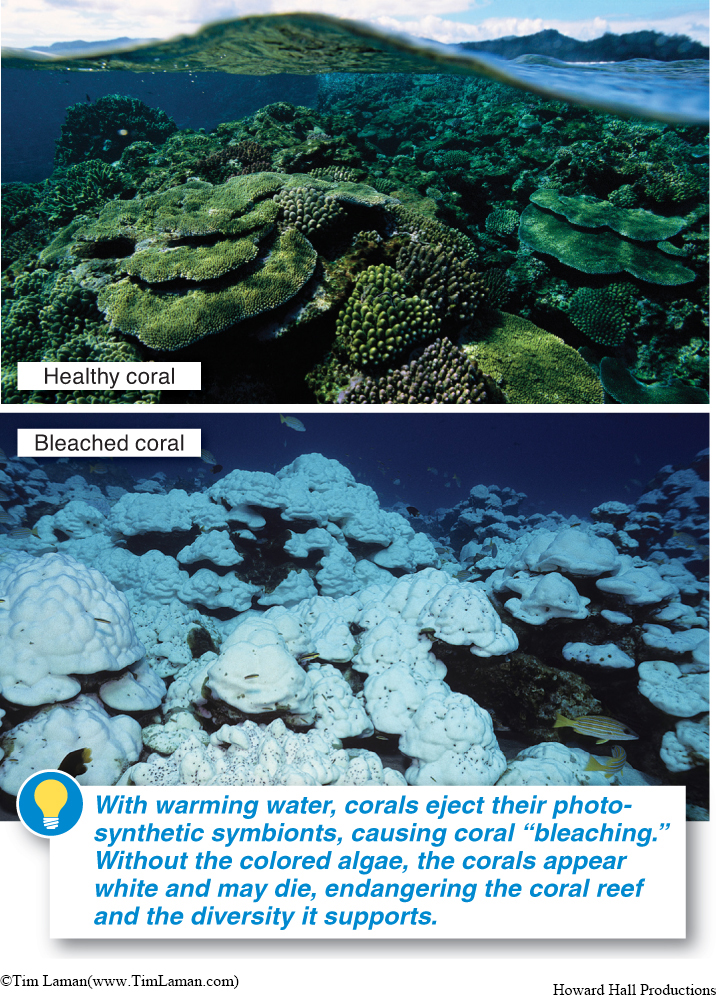11.0.3 11.5: Jellyfishes and other cnidarians are among the most poisonous animals in the world.
If you feel a sting when you are swimming in the ocean, you have met a jellyfish. If you are lucky, it will be one of the thousands of species that feed on tiny floating organisms called plankton, because these species have only mild stings. If it is a species that feeds on larger prey such as fish or shrimp, however, you are definitely unlucky. These jellyfishes have powerful stings that can cause extreme pain or even death.
The jellyfishes, along with sea anemones and corals, belong to the phylum Cnidaria (pronounced nigh-

There are two types of cnidarian bodies: a sessile polyp and a free-

Cnidarians are carnivores and use their tentacles to capture and feed on a wide variety of marine organisms, from protists to fish and shellfish. Their method of capturing prey relies on a sort of weapon that is unique to the cnidarians—

We explore here some of the great diversity among three familiar groups of cnidarians.
Corals The corals live as small (just a few millimeters long) polyps in large colonial groups, familiar as the beautiful structures found in coral reefs. Corals sting prey and use their tentacles to catch plankton (and even, on occasion, small fish), which are directed into the mouth by the tentacles, then digested in the stomach. Corals most commonly reproduce sexually, with both external fertilization (releasing sperm and eggs into the water, where they can fuse and form larvae) and internal fertilization (in which only sperm are released and can fertilize eggs within female corals). Corals can also reproduce asexually.
Q
Question 11.2
How is global warming affecting the coral reefs of the world?
455
Corals grow in a wide variety of shapes—
Coral reefs are among the first casualties of global warming. Although coral polyps can catch prey using their cnidocytes, they obtain most of their nutrition from algae, called zooxanthellae, that live symbiotically within the polyps. Each partner contributes and receives something of value in the relationship. The algae use the carbon dioxide produced by the polyps to conduct photosynthesis, and the polyps gain oxygen and nutrients produced by the algae. Strangely, when coral polyps get too hot they expel their zooxanthellae. Because the zooxanthellae are responsible for the colors of many corals, as well as much of their nutrition, when coral polyps expel their zooxanthellae, the coral appears white—

456
Sea Anemones Sea anemones resemble flowers, and some of the colorful species are popular additions to saltwater aquaria. The polyp form of a sea anemone looks a bit like an upside-
Jellyfishes The jellyfishes (which are not fish!) range tremendously in size. The Asian giant jellyfish is more than 6 feet (about 2 m) across and weighs nearly 500 pounds (more than 200 kg). When swarms of this giant jellyfish appear, they clog the nets of fishing boats with a sticky mass of toxic stingers. At the opposite end of the size scale is the Irukandji jellyfish, about the size of a hen’s egg. This species is so deadly that, in 2007, the sighting of just five Irukandji in Hervey Bay, Queensland, completely halted the filming of a major Hollywood movie (Fool’s Gold), which had to be completed in the safety of a studio.
TAKE-HOME MESSAGE 11.5
Corals, sea anemones, and jellyfishes are radially symmetrical animals with defined tissues, in the phylum Cnidaria. All cnidarians are carnivores and use specialized stinging cells located in their tentacles to capture prey.
What feature defines phylum Cnidaria, and what are the three major groups of cnidarians?